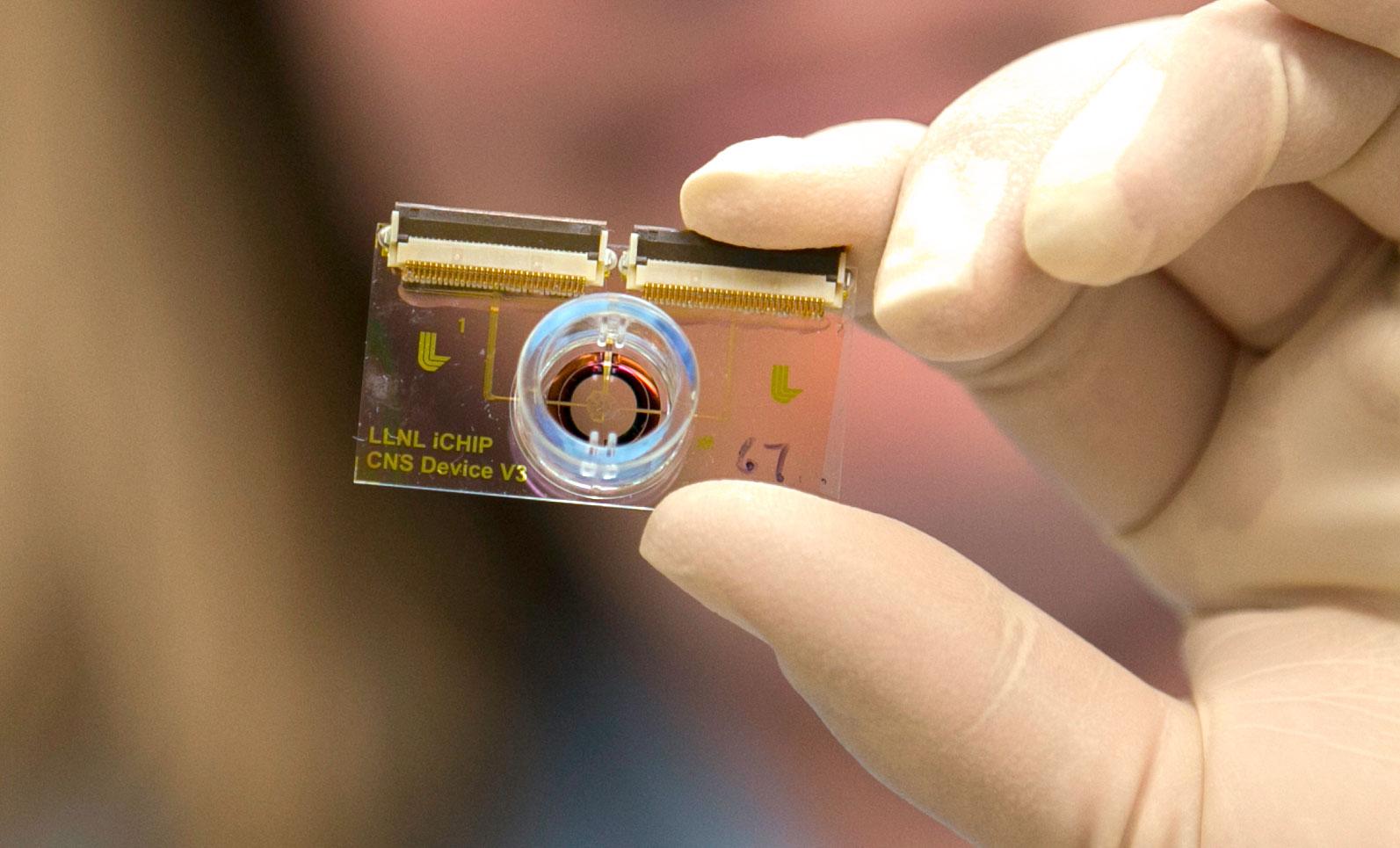LLNL is developing novel technologies through its In-vitro Chip-based Human Neuronal Investigation Platform (iCHIP). iCHIP combines primary human cells, tissue engineering, and microfluidics to reproduce the body’s physiological response under an array of conditions. The integrated system is mechanically comprised of electrical stimulation and recording, nutrient and oxygen perfusion via fluidic delivery, optical analysis, and quantitative measurements of cell health and viability. This technology has the potential to dramatically reduce the time needed to establish countermeasures against biological, chemical, and radiological agents and to bring new therapies to market.
Brain-on-a-chip systems hold great promise in predicting organ-level responses to new pharmaceutical drugs and unknown, potentially toxic agents. In order to achieve a system that can recapitulate the structure and function of the brain, the highly complex physical organization of the organ must be captured while still being able to record electrophysiological activity from neutrons. No group has yet demonstrated the ability to simultaneously incorporate neurons from multiple brain regions on a microelectrode array (MEA) surface without physically or chemically-modifying the substrate.
LLNL has developed a brain-on-a-chip system with a removable cell-seeding funnel to simultaneously localize neurons from various brain regions in an anatomically relevant manner and over specific electrode regions of a MEA. LLNL’s novel, removable cell seeding funnel uses a combination of 3D printing and microfabrication that allows neurons from select brain regions to easily be seeded into an area approximately 2 mm across, with cell populations separated by less than 100 microns. LLNL’s MEA design is anatomically relevant, allowing cortical cells to be seeded around the periphery of the array and up to three other neuronal populations from interior regions of the brain in the central regions of the MEA.
- Simple method of seeding up to four neuron types from various brain regions onto a MEA designed to resemble the arrangement of human brain regions with respect to each other.
- Overcomes the inability during seeding on a growth surface to segregate populations of varying cell types, as well as selectively placing cells only in specific areas, without the use of chemical or permanent physical surface modifications.
- Micropatterned wells are employed which limit growth, motility, and communication among cell populations.
- Alternative chemical patterning approaches can create disruptive interactive potential between chemicals and cells.
Research/development involving neuronal communication, microelectrode arrays (MEA), cell migration, cancer metastasis, quorum sensing, growth factor effects, organ-on-a-chip, human-on-a-chip, tissue engineering, developmental biology.
Phenotypic screening in CNS drug discovery.
LLNL’s prototype funnel has demonstrated simultaneous separation of 3 cell types, with improvements for an increased number of cell populations under development.
LLNL is currently seeking patent protection on the present invention. Related iCHIP filings include:
- U.S. 14/265019 Miniaturized, automated in-vitro tissue bioreactor
- U.S. 14/452453 Omnidirectional, multiaxial bioprinted tissue system, techniques and applications
Additionally, LLNL maintains over 40 patents and application on MEA configurations, methods, and systems.


